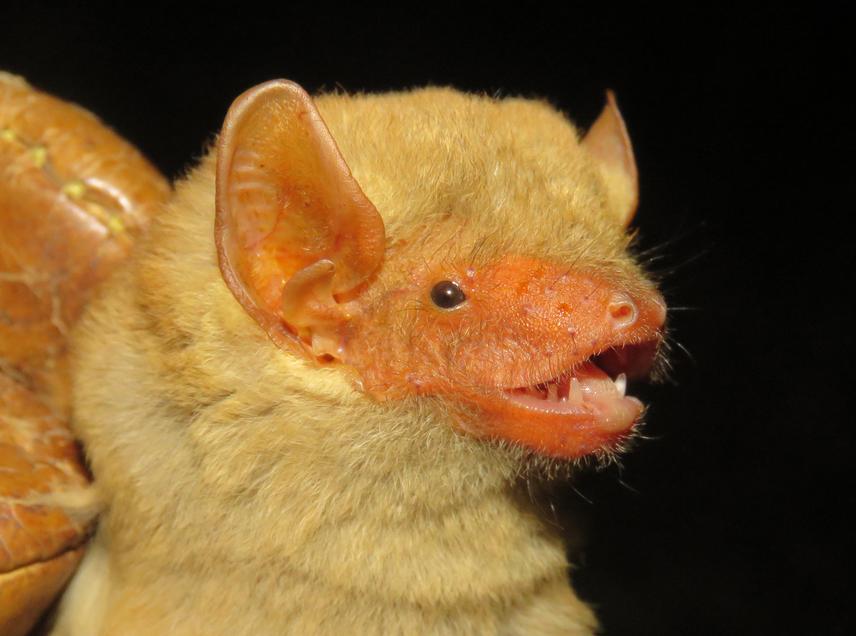Eléonore Zittoun
Southeast Asia is experiencing a biodiversity crisis, with a loss of 75% of original forest cover and a 42% decline in biodiversity projected by 2100. Dry dipterocarp forests are savannah-like woodlands unique to the region, which provide essential habitats for many rare species. These are increasingly threatened by deforestation and climate change, yet remain among the least protected tropical forest types. Many wildlife species rely on the waterholes that punctuate these ecosystems, especially during the dry season when they are analogous to desert oases. However, these keystone features are endangered by rising temperatures and reduced rainfall due to climate change in the region.

Hesperoptenus tickelli captured during live-sampling. © E. Zittoun.
Southeast Asian bats account for a quarter of the world’s bat species and are effective bioindicators that provide economically significant ecosystem services, including insect pest control, plant pollination, and seed dispersal. Due to their high surface-to-volume ratios, bats are prone to dehydration and rely heavily on surface water in semi-arid environments such as dry dipterocarp forests. Although restoration projects are addressing waterhole degradation in northern and eastern Cambodia, bats are currently excluded from these efforts and associated monitoring due to a lack of capacity. This project will address this gap by enabling acoustic identification and landscape-level monitoring of bats to identify priority waterholes for conservation attention.
To achieve this, we will compile recordings of echolocation calls emitted by Cambodian bat species and use these to develop a species classifier that accurately identifies anonymous bat calls recorded during acoustic monitoring efforts. This will enable analysis of landscape-level monitoring data that we will collect to determine the influence of environmental variables on the use of waterholes by bat assemblages. This will ensure that critical waterholes for bats and other wildlife in these semi-arid ecosystems are recognised and prioritised for conservation attention. The acoustic classifier will be made freely available, as will practical guidance enabling government agencies and NGOs to identify critical waterholes for wildlife conservation.
The project will also build local capacity and awareness to ensure its longer-term impact. Field teams comprising local community members will be trained in bat monitoring and environmental data collection. Educational materials such as posters and brochures will be distributed. A workshop will be undertaken to share research findings and raise awareness regarding the ecological importance of bats and waterhole conservation. Through these efforts, the project will promote sustained local engagement in bat conservation and the inclusion of bats in biodiversity protection strategies in a broader context.
Header: Project team in Kulen Promtep Wildlife Sanctuary (left to right): E. Zittoun (PhD student), V. Vai, (community member), T. Chhim, (ranger, Ministry of Environment), N. Furey, (PhD supervisor), M. Chhan (community member), V. Lom, (WCS biodiversity officer), S.M. Voeung (community member) and It Von (WCS biodiversity researcher. © WCS.